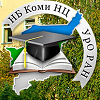Transformation of the Mineral Composition of Dispersed Soil under Microbiological Impact
Abstract
Keywords
Full Text:
PDF (Русский)References
Dashko R.E., Vlasov D.Yu., Shidlovskaya A.V. 2014. Geotekhnika i podzemnaya microbiota [Geotechnics and underground microbiota]. Institut PI Georekonstruktsiya, Sankt-Peterburg, p. 280. (in
Russian)
Zavarzin G.A. 2002. Mikrobnyy geokhimicheskiy tsikl kaltsiya [Microbial geochemical cycle of calcium]. Microbiologiya. 71(1):5–22. (in Russian)
Zverev V.P. 1982. Rol podzemnykh vod v migratsii khimicheskikh elementov [The role of groundwater in the migration of chemical elements]. Nedra. Moskva, p. 186. (in Russian)
Zobell K.E. 1972. Mikrobnaya biogeokhimiya kisloroda [Microbial biogeochemistry of oxygen]. Izvestiya akademii nauk SSSR, Seriya biologicheskaya. 1:23–42. (in Russian)
Ivanov M.V., Karavayko G.I. 2004. Geologicheskaya mikrobiologiya [Geological microbiology]. 73(5):581–597. (in Russian)
Ivanov P.V. 2015. Izmeneniye sostava, stroyeniya i svoystv dispersnykh gruntov pri aktivizatsii prirodnogo mikrobnogo kompleksa [Changes
in the composition, structure and properties of dispersed soils during the activation of the natural microbial complex]. Diss. kand. geol.-min. nauk, Moskva. (in Russian)
Kuznetsov S.I., Ivanov M.V., Lyalikova N.N. 1962. Vvedeniye v geologicheskuyu mikrobiologiyu [Introduction to Geological Microbiology].
Nauka, Moskva, p. 239. (in Russian)
Trofimov V.T., Korolev V.A., Voznesenskiy V.A., Golodkovskaya G.A., Vasilchuk Yu.K., Ziangirov R.S. 2005. Gruntovedeniye [Soil science]. MGU. Moskva, p. 1024. (in Russian)
Barker W.W., Welch S.A., Chu S., Banfield J.F. 1998. Experimental observations of the effects of bacteria on aluminosilicate weathering. American Mineralogist, 83:1551–1563.
Bennett P.C. 1991. Quartz dissolution in organic-rich aqueous systems. Geochimica et Cosmochimica Acta, 55(7):1781–1797.
Bennett P.C., Rogers J.R., Choi W.J., Hiebert F.K. 2001. Silicates, silicate weathering, and microbial ecology. Geomicrobiological Journal, 18(1):3–
Cultrone G., Arizzi A., Sebastián E., Rodriguez Navarro C. 2008. Sulfation of calcitic and dolomitic lime mortars in the presence of diesel particulate
matter. Environmental Geology, 56:741–752.
Dashko R., Shidlovskaya A. 2016. Impact of microbial activity on soil properties. Canadian Geotechnical Journal, 53(9):1386–1397.
Ehrlich H.L. 1996. Geomicrobiology. N.Y., Marcel Dekker, Inc, p. 719.
Hammes F., Verstraete W. 2002. Key roles of pH and calcium metabolism in microbial carbonate precipitation. Reviews in Environmental Science
and Bio/Technology, 1:3–7.
Hendry J.P. 1993. Calcite cementation during bacterial manganese, iron and sulphate reduction in Jurassic shallow marine carbonates. Sedimentology, 40(1):87–106.
Hiebert F.K., Bennett P.C. 1992. Microbial control of silicate weathering in organic-rich ground water. Science, 258:278–281.
Ivanov P., Manucharova N., Nikolaeva S., Safonov A, Krupskaya V., Chernov M., Eusterhues K., Totsche K.U. 2020. Glucose-stimulation of natural microbial activity changes composition, structure and engineering properties of sandy and loamy soils. Engineering Geology. 265, Article 105381.
Lovley D.R. 1993. Dissimilatory metal reduction. Annual Reviews in Microbiology, 47:263–290.
Maksimovich N.G., Khmurchik V.T., Demenev A.D. 2016. The role of microorganisms in elevating the turbidity of dam seepage water. Power Technology and Engineering, 50(1):6–8
DOI: http://dx.doi.org/10.17072/psu.geol.20.1.24
Refbacks
- There are currently no refbacks.















